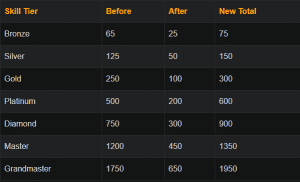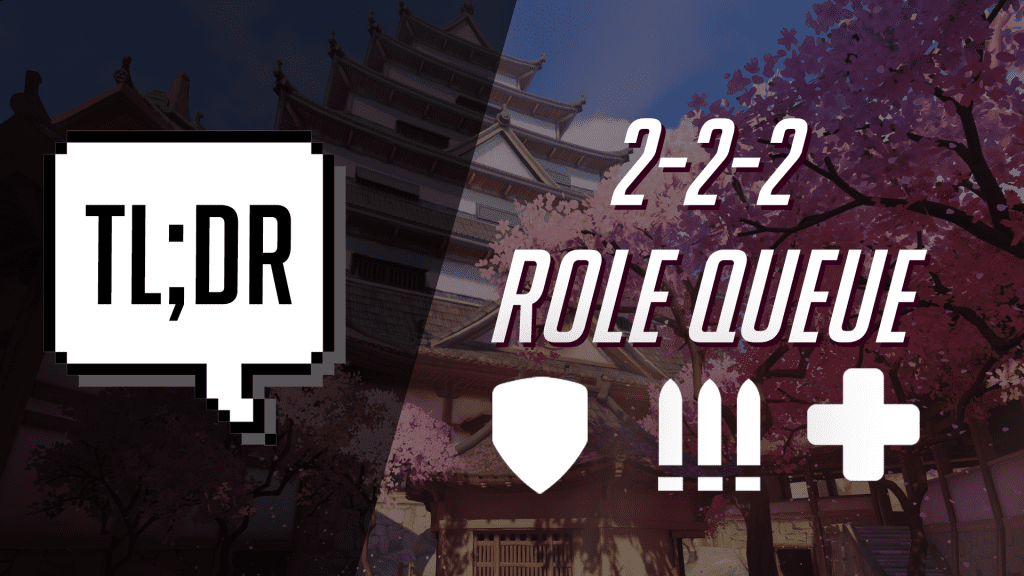The new Role Queue system is now officially on the live servers! Patch notes can get pretty long so we’ve compressed the answers to some frequently asked questions about the 2-2-2 Role Queue into this (hopefully) helpful TL;DR.
What is Role Queue? How does it work?
Role Queue is a brand-new system in both quick and competitive play that allows you to queue up for your desired position. When you queue up for a competitive match, you will see this screen showing the role options and their estimated wait times. Simply check off which role you would like to queue for (you can choose more than one) and hop into the queue!
The heroes are organized into three roles: tank, damage, and support. With this new system, players will have a limited hero pool when the match begins. As soon as you declare a role and begin a match, you are unable to play a character that is not within that role for the rest of the match.
What is 2-2-2?
This refers to the team composition that will be enforced by the new Role Queue system: 2 tanks, 2 damage, and 2 supports. Every team will now be made up of the same number of heroes of each category. Say goodbye the good days of running 6 damage heroes in Competitive.
How does this affect Skill Rating (SR) and competitive points (CP)?
With this news system, you will now receive separate Skill Ratings for each role! There will now be separate leaderboards for each role as well as an additional combined-average leader board.
You still earn competitive points during the season like before! Similar to the previous seasons, you will earn competitive points throughout the season as well as through the end-of-season rewards. However, the CP that you earn at the end of the season is based on the highest Skill Tier you obtained during the season. The CP will now be separated across three pools (for each role).

What are the positive changes that 2-2-2 Role Queue brings?
Role Queues have made an overall positive change to the pace and composition of the game. Players will now be able to play the role(s) they actually want to play, and your main role’s SR matters much more now. Matches are now more balanced because one’s SR is reflective of the specific role they’re queued up for. This encourages players to try their off-roles in competitive without feeling like they’re being punished for under performing in their Elo.
Also, players who queue for roles that are in high demand now have the chance to earn a loot box reward. This encourages players to try other roles, thus distributing people more evenly between the three roles.
What are potential issues with this system?
Not everyone is happy with these changes. While you are able to queue up for a specific role, this doesn’t mean you are guaranteed a main tank, DPS, or healer. Plus, because the roles are locked, you are unable to swap roles if a player is having a bad game. DPS mains have mixed feelings about the role queue: although they can confidently play their desired heroes in their competitive matches, the 10+ minute wait time is daunting. While the Overwatch team has acknowledged the issue, it is difficult to speculate when these queue times will be fixed.
Regardless of the individual issues people may have about the Role Queues, it is safe to say that the introduction of 2-2-2 has rejuvenated the Overwatch casual and competitive scene. Are you interested in competing in this new meta? Come to The Gaming Stadium every Wednesday and flex your flex picks!
